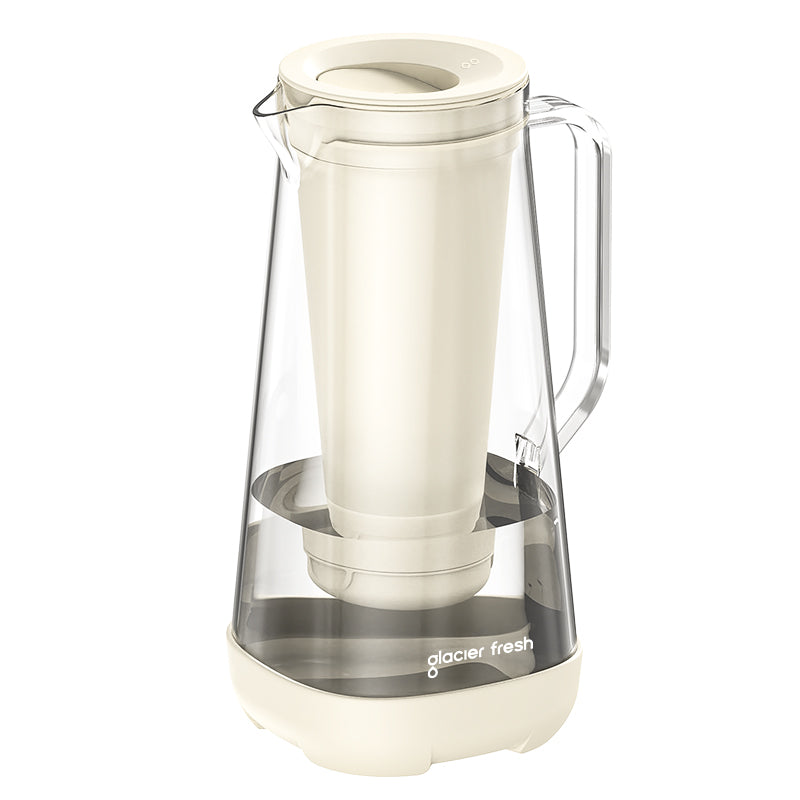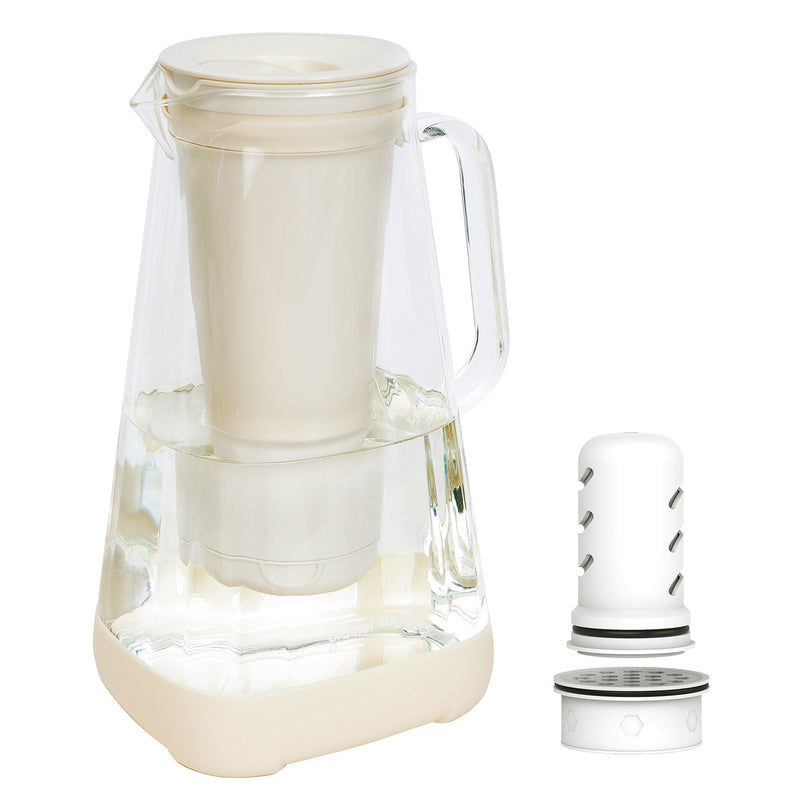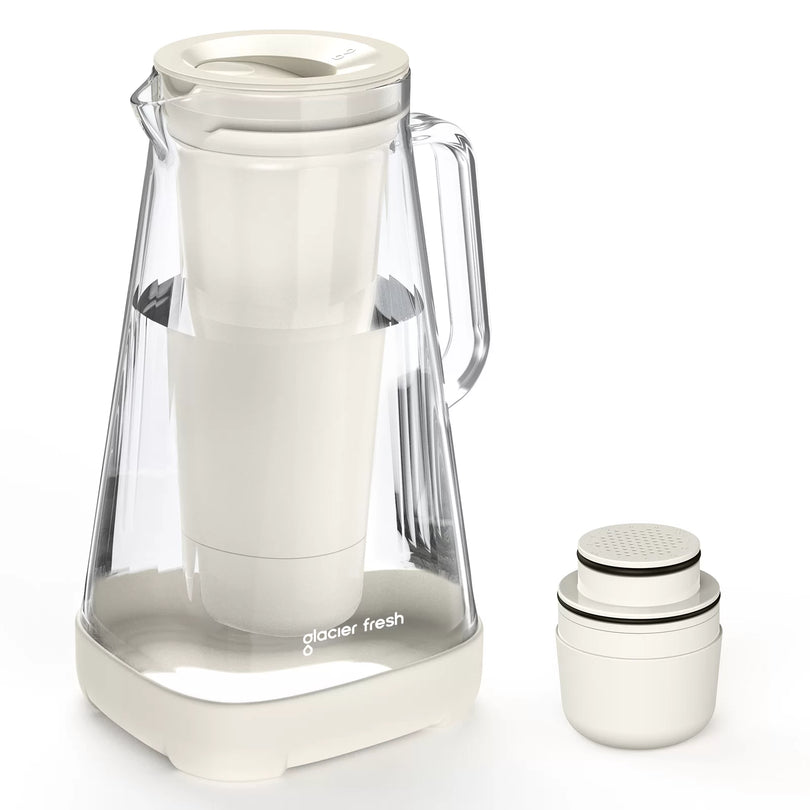Table of Contents:
Water is vital for life. Sixty percent of the human body is made up of water. All living organisms need water to survive. Yet, odor and impurities are common problems in water supplies. As per a study by the UN, globally, at least 2 billion people use a drinking water source contaminated by faeces. This can lead to diseases or a bad experience. You may wonder how to purify water and get rid of this problem.
You can purify water through filtration. It is the act of removing impurities and other agents that cause a foul smell. We can filter through reverse osmosis, mechanical filtering, absorption, chlorination, and water softening. These techniques provide portable water, removing most of the impurities in it.
The article discusses the various sources of impurities in water. It then enumerates the several ways of filtering water and making it fit for human consumption. We at Glacier Fresh believe in making water pure and clean, nothing in between.
Common Sources of Impurities in Water:
There are several sources of impurities in water. These lead to:
- Odor in water supply
- Colored water
- Bad taste
Let’s look into the sources of these problems one by one:
Odor in water supply:
Odor in the water supply is due to several factors. The major ones are:
- Smell of petroleum, solvent, gasoline, fuel, or turpentine odors:This is a rare problem. But at times, your water supply may have a foul smell of organic solvents. This may be due to any leaking reservoir near your water supply. Do not use this water and contact your utility provider.
- Smell of chlorine or medicinal odor:This is due to chlorine added to the water supply. Or its interaction with organic matter in your plumbing system.
- Smell of rotten eggs or sulfur:This is because of hydrogen sulfide in the water supply. Or due to bacteria growing in your plumbing system.
- Moldy, grassy, earthy, or fishy smell:This is because of natural water reservoirs near your plumbing. It can also be due to bacteria, especially during the rainy season.
- Sewage odor:There can be a leak in the sewage system. The dirty water can enter your water supply pipes leading to the problem. It can cause serious health issues.
Colored water:
Clean water should be colorless. At times, the water acquires color due to several reasons. They are:
- Brown or black water:This is due to manganese in your water supply. The source of this rare metal is plumbing pipes.
- Blue or green water:This is due to copper from your water pipes. Rarely, it can be due to algae as well.
- Yellow, orange, brown, or red water:This is due to iron oxide in water. The source of iron oxide is iron pipes and faucets.
Bad taste:
Water does not have any taste of its own. Yet, due to reasons, it may get an unpleasant taste. Some of these reasons are:
- Salty water:This happens due to high sodium, potassium, or magnesium. This problem is common in coastal areas. Do not use this water and contact your water supplier at the earliest.
- Metallic taste: Water may get a metallic taste due to iron or copper. The source of these elements is pipes and faucets. This matter can cause health problems.
- Medicinal or chlorinated taste:Excess chlorine or other chemicals cause the problem. Contact your utility provider for this problem.
- Sweet taste:This is due to excess calcium or unbalanced pH in water. This problem is due to plumbing or leaks in pipes.
How to Filter Water:
Having understood the sources of water contamination, you may want to know how to filter it. There are several ways to filter water and make it fit for consumption. The main methods are:
- Reverse Osmosis
- Mechanical filtering
- Absorption
- Chlorination
- Water softening
We will discuss them one by one. After all, we at Glacier Fresh are experts in water filtration.
Reverse Osmosis: It is the process of removing inorganic solvents in water. Water passes through a semi-permeable membrane. The membrane pore size is small enough to allow water molecules to pass through. The impurities are flushed out through a small amount of drain water.
Reverse Osmosis, in combination with other water filtering methods, leads to 99.9% clean water. It does not need electricity and uses water pressure to drive it through the membrane. The RO membranes used in our purifiers are made from state-of-the-art technology. Our RO membranes have a pore size of 1 nanometer allowing only water molecules to pass. They have an excellent desalinization rate (the ability to filter out unwanted elements). These RO membranes also have a good gallon to wastewater ratio (the higher the better).
Mechanical filtering: Water impurities are removed by passing the water through a barrier. The impurities are left behind and clear water is available. The filter can be a threaded filter or a ceramic filter. Depending on the size of the filtered impurity, the filter is rated in microns. For eg., a 5-micron filter will remove most particles visible to the naked eye. A 0.5-micron filter will remove bacteria from the water.
Glacier Fresh has the best mechanical filters. We make world-class ceramic filters by baking a clay mixture over 1000 °C. They are highly durable, reliable, and reusable. The non-woven fabric filters are a low-cost alternative in the mechanical filter category. The PP cotton-based filters are made of polypropylene. They have a high service life and good pollutant carrying capacity.
Absorption: Reagents such as activated carbon are used to trap and remove unwanted chemicals from water. The water filter from inside has a large surface area for carbon to interact with water and remove any impurities. We at Glacier Fresh use activated carbon from coconut shells for the best results.
Our carbon filters use either sintered or extruded forms of activated carbon. These absorption filters have high filtration accuracy, low-pressure loss, and large flow.
Chlorination: It is the process of adding small amounts of chlorine to the water to kill harmful microbes. The small amounts of chlorine do not cause any harm to us making our water safe. The process is used by utility companies.
Water softening: Several reagents are used for ion exchange-based water treatment. In this technique, impurities like magnesium and calcium ions exchange with sodium and hydrogen ions. This technique is primarily used to soften hard water. The treated water, depending upon the process used, may become portable or be used for other purposes.
Glacier Fresh produces the best water softening agents. We offer calcium sulfite balls and anti-scale filtration material. These can be used for both domestic and industrial purposes.




















